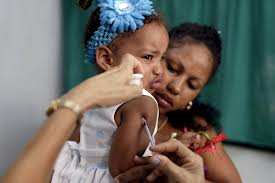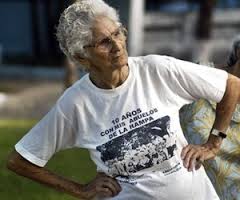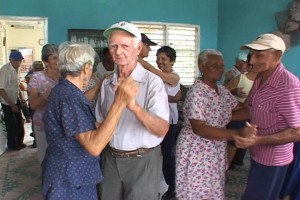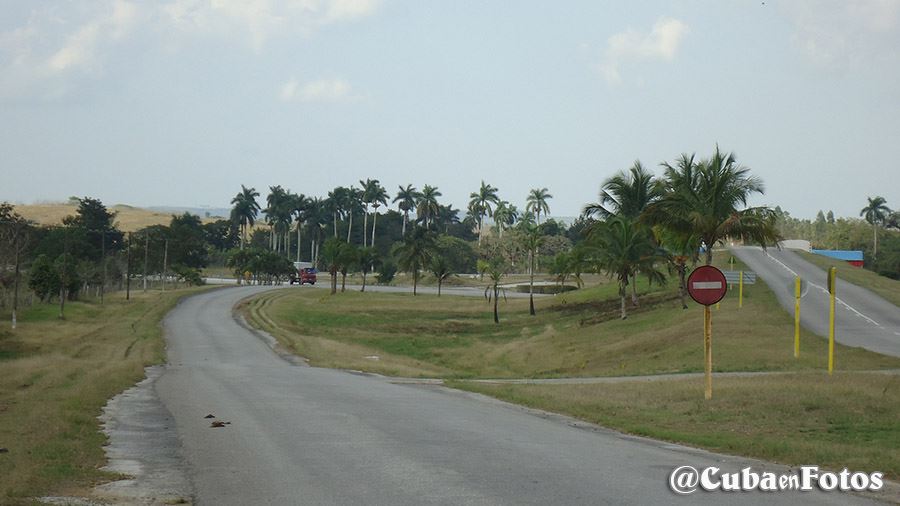The latest census data begins to surface. The severe demographic contraction inhibits the development of the country and depicts the great political failure of ‘the revolution’.
Recently, the state media has released figures provided by the National Bureau of Statistics and Information(ONEI),related to the last census conducted in the country in September 2012.
A year after the survey , among the results that are reported beckon official forecasts : 2030 current Cuban population of 11,163,934 inhabitants at the time of the census survey will become of 10,904,985 inhabitants. Put another way : in 17 years the Cuban population will have decreased by 2.3 % .
In contrast , recall that Cuba experienced a population increase from 1959 that exceeded 80 % in the next 30 years . In such a way that for 1989 the number of inhabitants in the country had exceeded 11 million, when the principle of the “revolution” were about 6 million citizens.
It was driven population growth , first , by the illusion of the young regime whose chimeras had not had time to fail , which then joined the sustained economic boom in Soviet subsidies .
But with the demise of “real socialism ” in the last decade of the last century , the numbers in the demographic tables decreased to become negative . The aging of the Cubans began to become so evident that it was recognized as a worrying phenomenon for the upper echelons of power.
As a result , today the number of inhabitants in the country is declining , despite the effort that seems to address the state in achieving economic indices encouraging and favorable public opinion regarding the future . Apparently, neither ads nor its implementing socio-economic reforms to encourage Cubans to have enough offspring.
Moreover, abandoning the country increases. Tens of thousands of Cubans , mostly young people aged between 15 and 49 years (average reproductive period), leaving the island each year and build their families in other countries , even with all the work and risks imposed by emigration.
Some young couples in Cuba do not have children simply because “that’s not being done to a child ,” referring to not want to see their offspring live on a pittance guaranteed by rationing , lack of freedom , growing violence , the collapse services and social degradation in performance . Even with the mass exodus prior to 1990, the Cuban population was not hit as hard as the high fertility rate at that time .
In the media talking about production , licensing and relaxations, but the Cubans are still reluctant to give birth to more ” Pioneers for communism ” .
Paradoxically , the rulers say walk the path of progress and have the support of the people, but the official analysis indicates ONEI demographic contraction not only will not be reversed , but that is not going to stop. The census results have been delayed a year in disappointing results published to shed that contradict government promises of economic growth. Who will work to keep all future overcrowding at retirement age ?
Apparently, in the not too distant Cuba is an island homes, a retreat of biblical proportions , for other gruesome, the real counterpart Chairman islet called the French writer Jules Verne taken as the setting for his fiction Two years vacation. With such a gap , it will be even harder to achieve development announced by the spokespersons of the current reforms.
Soures: DDC/Victor Ariel Gonzalez/La Habana
InternetPhotos/thecubanhistory.com
IN CUBA: Fewer and more old
The Cuban History, Arnoldo Varona, Editor
EN CUBA: MENOS Y MAS VIEJOS
Los datos del último censo comienzan a aflorar. La severa contracción demográfica conspira contra el desarrollo del país y retrata el gran fracaso político de ‘la revolución’.
Recientemente, la prensa estatal ha dado a conocer cifras brindadas por la Oficina Nacional de Estadísticas e Información (ONEI), relacionadas con el último censo efectuado en el país, en septiembre de 2012.
A un año del sondeo, entre los resultados que se divulgan llaman la atención los pronósticos oficiales: para el 2030 la población cubana actual, de 11.163.934 habitantes al momento del levantamiento censal, habrá pasado a ser de 10.904.985 habitantes. Dicho de otra forma: en 17 años la población cubana habrá disminuido un 2.3%.
Como contraste, recordemos que Cuba experimentó un aumento poblacional a partir de 1959 que superó el 80% en los 30 años siguientes. De tal suerte que para 1989 la cantidad de habitantes en el país había superado los 11 millones, cuando al principio de la “revolución” eran alrededor de 6 millones de ciudadanos.
Se trató de un crecimiento demográfico impulsado, primeramente, por los espejismos del joven régimen, cuyas quimeras no habían tenido tiempo de fracasar, al que luego se sumó la bonanza económica sustentada en los subsidios soviéticos.
Pero con la desaparición del “socialismo real” en la última década del siglo pasado, los números en las tablas demográficas descendieron hasta volverse negativos. El envejecimiento de los cubanos comenzó a hacerse tan evidente, que fue reconocido como un fenómeno preocupante por las altas esferas del poder.
Como resultado, en la actualidad la cifra de habitantes en el país está mermando, pese al empeño que parece poner la dirección del Estado en lograr índices económicos alentadores y un estado de opinión favorable con relación al futuro. Al parecer, ni los anuncios de reformas socioeconómicas ni su implementación incentivan a los cubanos a tener suficiente descendencia.
Además, el abandono del país se incrementa. Decenas de miles de cubanos, en su mayoría jóvenes con edades que oscilan entre 15 y 49 años (período reproductivo promedio), abandonan cada año la Isla y construyen sus familias en otras naciones, aun con todos los trabajos y riesgos que impone la emigración.
Algunas parejas jóvenes en Cuba no tienen hijos sencillamente porque “eso no se le hace a un niño”, refiriéndose a que no quieren ver a su prole vivir en una miseria garantizada por el racionamiento, la falta de libertad, la violencia creciente, el colapso de los servicios y el envilecimiento en las prestaciones sociales. Incluso con los éxodos masivos anteriores a 1990, la población cubana no se había visto tan afectada dado el alto índice de fecundidad en aquel entonces.
En los medios de comunicación se habla de producción, licencias y flexibilizaciones, pero las cubanas siguen renuentes a dar a luz más “pioneros por el comunismo”.
Paradójicamente, los gobernantes aseguran caminar por la senda del progreso y contar con el apoyo del pueblo; pero el análisis oficial de la ONEI indica que la contracción demográfica no solo no va revertirse, sino que tampoco va a detenerse. Los resultados del censo han demorado todo un año en publicarse para arrojar resultados desalentadores que se contradicen con las promesas gubernamentales de crecimiento económico. ¿Quiénes trabajarán para mantener a toda la futura superpoblación en edad de retiro?
Al parecer, en un plazo no muy lejano Cuba será una isla de ancianos, un retiro de proporciones bíblicas, por demás dantesco; la contraparte real del islote llamado Chairman que el escritor francés Julio Verne tomase como escenario para su obra de ficción Dos años de vacaciones. Con tal desajuste, será todavía más difícil alcanzar el desarrollo anunciado por los voceros de las reformas actuales.
Soures: DDC/Victor Ariel Gonzalez/La Habana
InternetPhotos/thecubanhistory.com
IN CUBA: Fewer and more old
The Cuban History, Arnoldo Varona, Editor



 © INSIDE CUBA: The Population decreased and got older (Photos) * * EN CUBA: Menos población y más viejos (Fotos).
© INSIDE CUBA: The Population decreased and got older (Photos) * * EN CUBA: Menos población y más viejos (Fotos).


